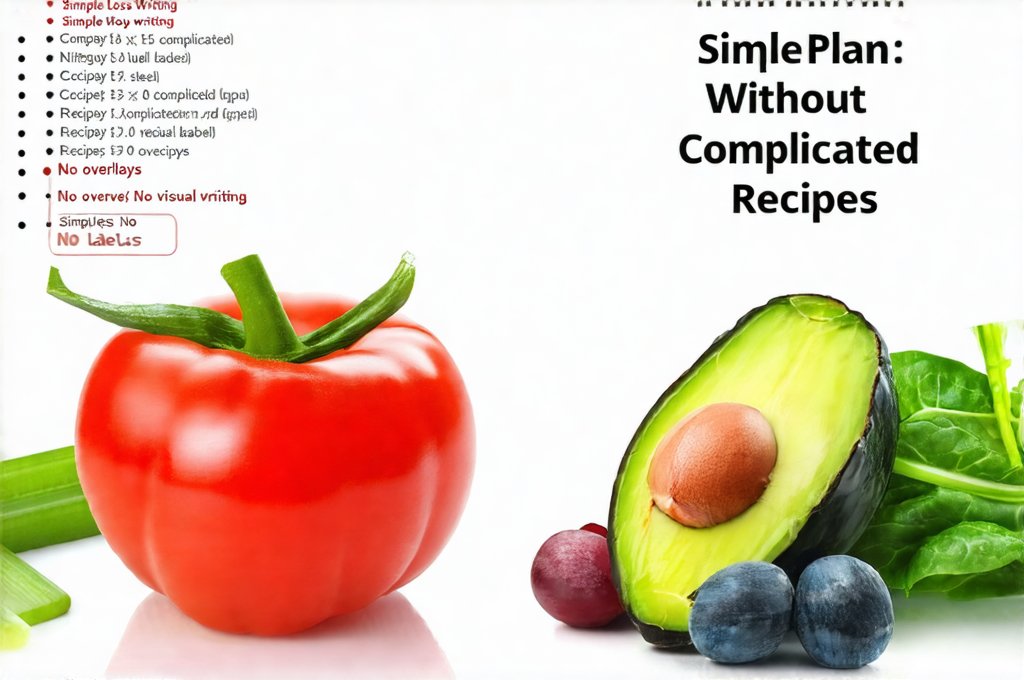Weight loss often feels overwhelmingly complex, filled with restrictive diets, intricate meal plans, and hours spent in the gym. Many people become discouraged before they even begin, believing that significant change requires monumental effort. However, sustainable weight loss isn’t about drastic measures; it’s about making small, manageable adjustments to your existing lifestyle. It’s about building habits that support a healthier you, not depriving yourself into misery. This approach focuses on simplicity and consistency, recognizing that lasting results come from gradual change rather than quick fixes.
The key is shifting the focus away from what you can’t have, and towards nourishing your body with real food while incorporating mindful movement into your daily routine. We’ll explore a plan that avoids complicated recipes or elaborate exercise regimens – one built on principles of intuitive eating, portion control, and finding joy in the process. This isn’t about achieving an unrealistic ideal; it’s about feeling good in your skin and improving your overall well-being through sustainable lifestyle choices. It is important to remember everyone’s body is different and results will vary. Perhaps starting with a weight maintenance plan can help build consistency.
Building a Foundation: Diet Simplification
The biggest hurdle for many when starting a weight loss journey isn’t the exercise, it’s the food. Complicated recipes and restrictive diets are often unsustainable because they feel like a chore. The most effective approach to diet simplification involves focusing on whole, unprocessed foods as much as possible. Think of it less as a ‘diet’ and more as an upgrade to your eating habits. Prioritize filling your plate with nutrient-dense options that will keep you satisfied for longer periods.
This doesn’t mean eliminating all treats or favorite foods. It does mean being mindful of portion sizes and frequency. A small indulgence occasionally won’t derail your progress, but consistently overeating – even healthy foods – can hinder results. Consider tracking what you eat for a week just to get an honest assessment of current habits. This isn’t about judgment; it’s about awareness. You might be surprised by how many extra calories are creeping into your diet without you realizing it!
The core principle is addition, not restriction. Add more vegetables, fruits, lean proteins and whole grains to your meals. As you add these healthy components, naturally you’ll find less room for processed foods and sugary drinks. Drink plenty of water throughout the day – often thirst is mistaken for hunger. Aim for at least eight glasses daily. A good starting point is replacing sugary beverages with water or unsweetened tea. If you are looking for a more structured approach, consider a vegan weight loss plan.
Mindful Portion Control
Portion control isn’t about depriving yourself; it’s about being realistic and mindful of how much food your body actually needs. Many people unknowingly consume oversized portions, contributing to weight gain. One simple technique is using smaller plates – this can visually trick your brain into thinking you’re eating more than you are.
- Visual cues: Estimate portion sizes using everyday objects (e.g., a deck of cards represents a serving of meat).
- Read food labels: Pay attention to serving sizes and nutritional information.
- Pre-portion snacks: Instead of eating directly from the bag, divide snacks into individual servings.
Another helpful strategy is to slow down your eating pace. It takes about 20 minutes for your brain to register fullness. Eating quickly can lead to overconsumption before you even realize you’re satisfied. Put your fork down between bites, and savor each mouthful. Pay attention to how different foods make you feel – this helps build a stronger connection with your body’s hunger cues.
Hydration & Snacking Strategies
Staying adequately hydrated is crucial for weight loss and overall health. Water not only helps you feel full, but it also plays a vital role in metabolism and digestion. Carry a reusable water bottle with you throughout the day and sip on it regularly. Infusing your water with fruits or herbs (like lemon, cucumber, or mint) can make it more appealing.
Snacking often gets a bad reputation, but it doesn’t have to be detrimental to weight loss. In fact, strategic snacking can help prevent overeating at meals. Focus on snacks that combine protein and fiber for sustained energy. Some healthy snack options include:
– Apple slices with peanut butter
– Greek yogurt with berries
– A handful of almonds
– Carrot sticks with hummus
Avoid processed snack foods high in sugar, salt, and unhealthy fats. Plan your snacks ahead of time to avoid impulsive choices when hunger strikes. Remember that snacking is meant to bridge the gap between meals, not replace them. For those with specific health needs, a diabetic weight loss plan may be beneficial.
The Power of Meal Prepping (Simplified)
Meal prepping doesn’t have to involve spending hours in the kitchen on Sunday afternoons. It can be as simple as preparing a few key ingredients or components that you can easily assemble into meals throughout the week. For example:
1. Roast a large batch of vegetables.
2. Cook a pot of quinoa or brown rice.
3. Grill some chicken breasts or fish.
These prepped items can then be combined in various ways to create quick and healthy meals. A simple salad with grilled chicken, roasted vegetables, and quinoa is a complete and satisfying meal that takes only minutes to assemble. Utilizing leftovers is also an excellent way to simplify meal prepping. Don’t think of it as “leftovers” but rather pre-made components for the next day’s lunch or dinner! This saves time, reduces food waste, and keeps you on track with your healthy eating goals. Consider one-pot recipes to make meal prepping even easier.




